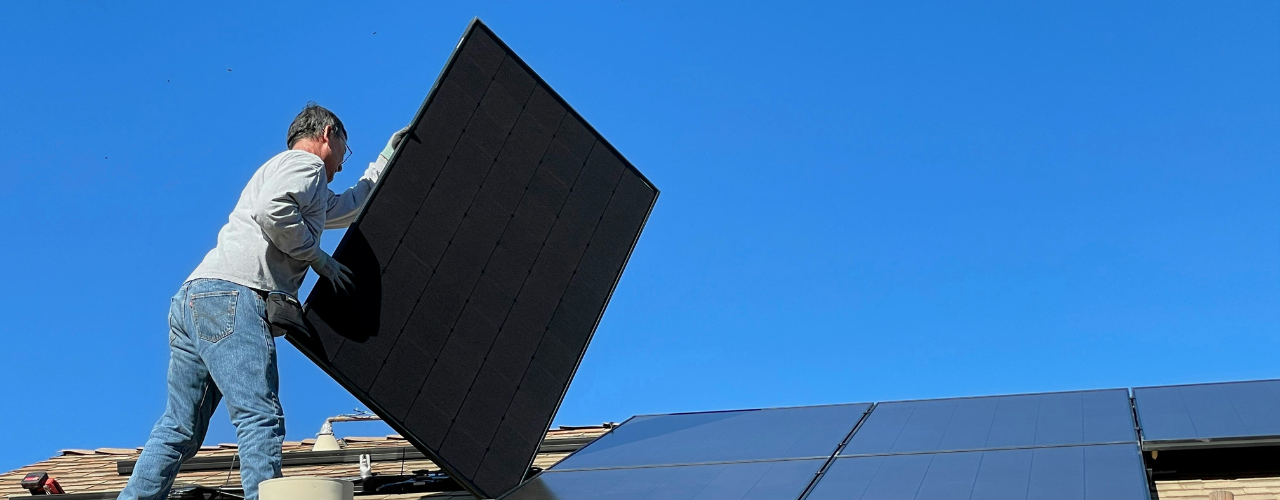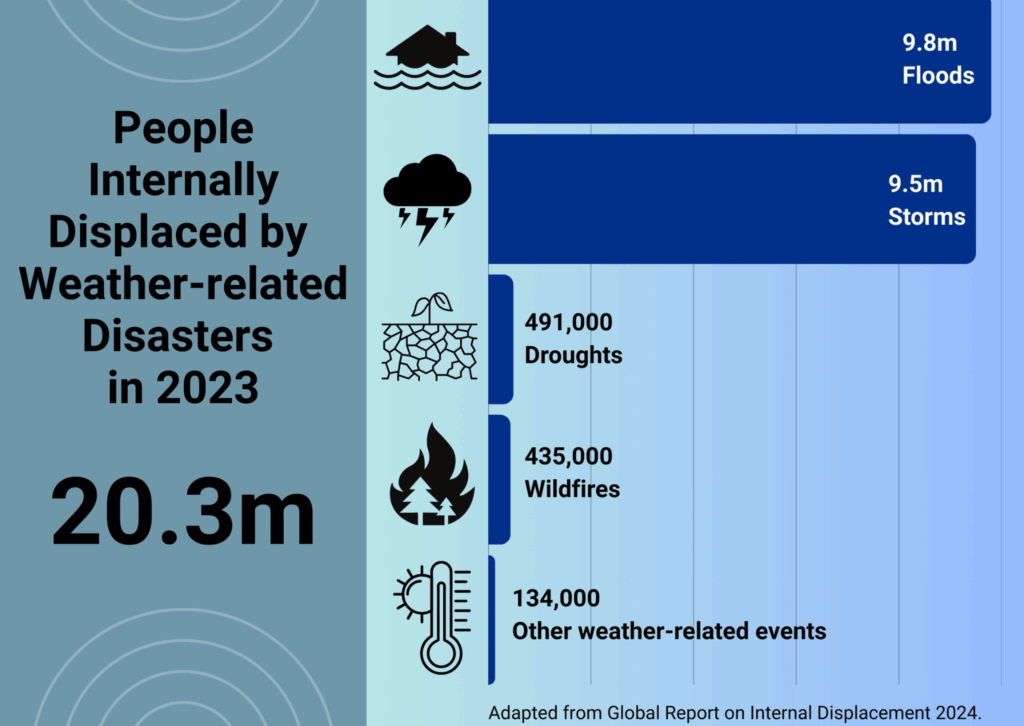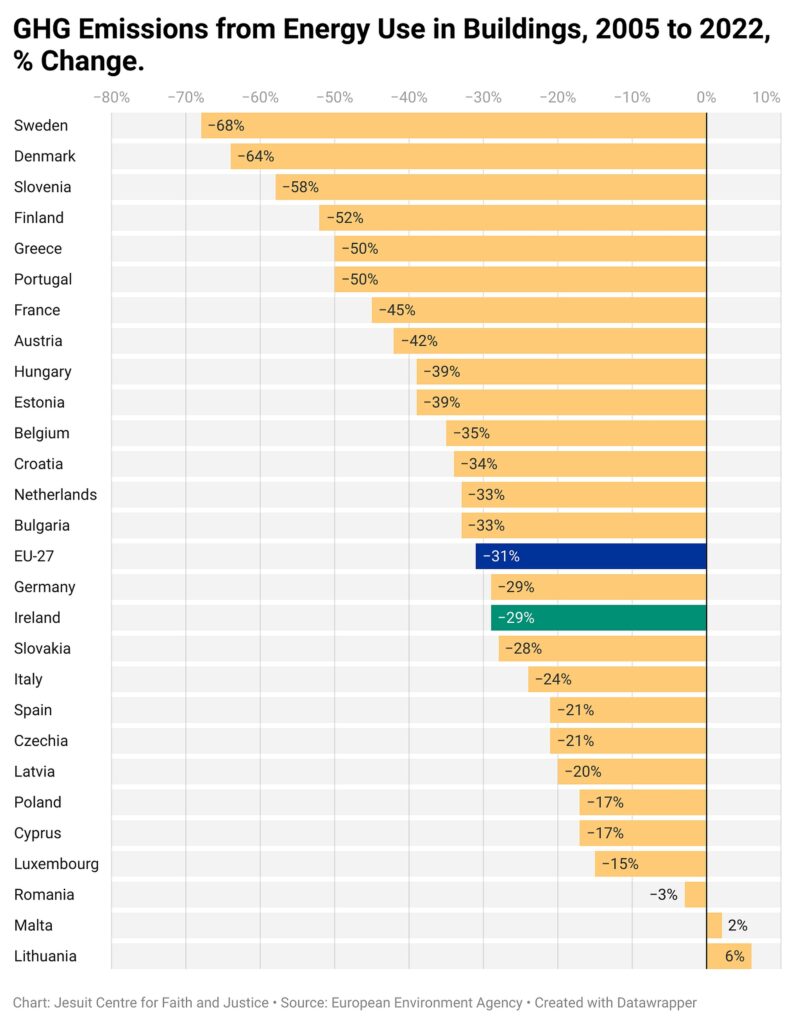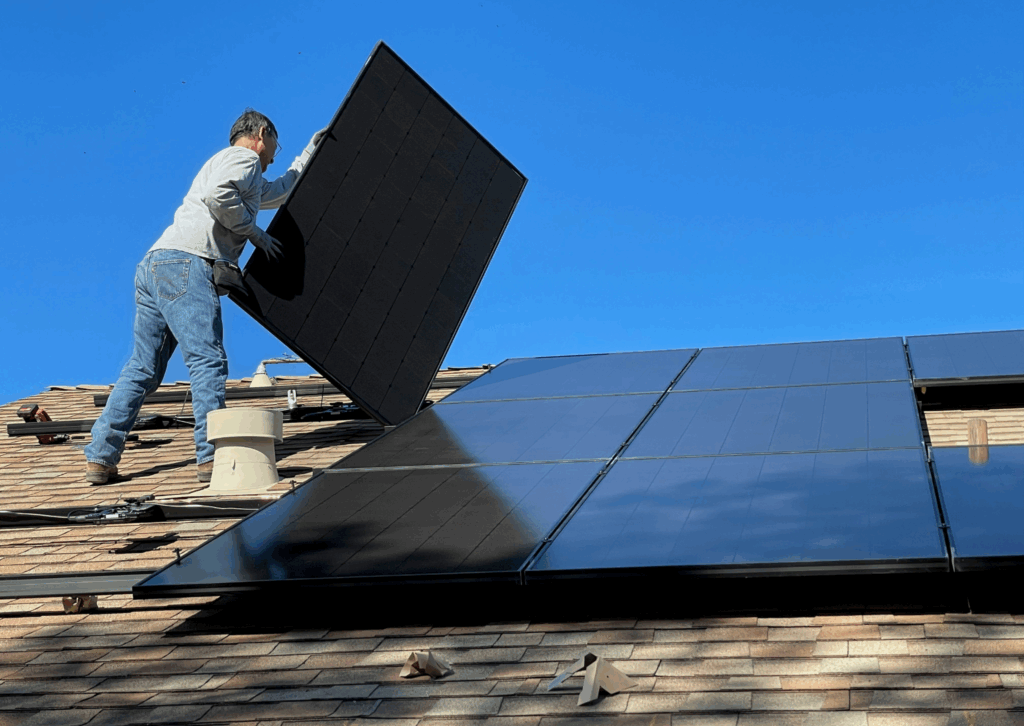
Davide Dell’Oro SJ
Davide Dell’Oro, SJ is an Italian priest of the Society of Jesus. He is currently a visiting scholar at Politecnico di Milano, where he researches building decarbonisation and climate change mitigation and adaptation. He has a Ph.D. and an MSc in Civil Engineering-Architecture from Politecnico di Milano. He was a visiting scholar at Stanford University and a visiting student at the Lawrence Berkeley National Laboratory (LBNL) and the Center for Built Environment (BMG) – University of Gävle (HIG). He has an STL in systematic theology from the Theological University of Southern Italy, a B.A. in theology from the Faculdade de Teología e Filosofía (FAJE), and a B.A. in philosophy from the Pontifical Gregorian University (PUG).
Introduction1
Climate change poses a severe threat to the lives of millions, particularly vulnerable communities. In the encyclical Laudato Si’, released ten years ago, Pope Francis emphasised the urgent need for global action to combat climate change effectively, urging humanity to become responsible stewards of our Common Home.2 In his follow-up document, Laudate Deum, the Pope reiterated his concern about the climate crisis, emphasising that greenhouse gas (GHG) emissions from human activities significantly contribute to the problem.3 Pope Francis called for humanity to adopt more sustainable lifestyles that generate fewer GHG emissions.4 While there have been notable efforts to reduce GHG emissions, much more work remains to be done to contain climate change. What role do our buildings – and how we inhabit them – play in this ecological crisis? Can building decarbonisation, which focuses on reducing GHG emissions from buildings, help mitigate climate change? Is this action within our reach? This article aims to offer some answers to these questions.
CURRENT CLIMATE SCENARIO. WHERE ARE WE?
The climate is changing globally at an alarming rate. According to the World Meteorological
Organization, 2023 was the warmest year on record, almost reaching the 1.5°C threshold above
pre-industrial levels.5 Alarmingly, some scientists believe that the rate of warming is happening faster than expected.6 Six international databases indicate that last year may have set another record, with the global average surface temperature potentially peaking at about 1.55°C above the pre-industrial level.7NASA also confirms this potential new peak in global warming, reporting that “for more than half of 2024, average temperatures were more than 1.5°C above the baseline, and the annual average, with mathematical uncertainties, may have exceeded the level for the first time.”8 As UN Secretary-General António Guterres stated, “[w]e have just endured the hottest decade on record – with 2024 topping the list, and likely to be the first calendar year with a global mean temperature of more than 1.5°C.” Unfortunately, he adds, “global heating is a cold, hard fact.”9
The impact of climate change on the occurrence and intensity of extreme weather events has gained significant attention in recent years, and rightly so. Nearly 25 years ago, J.T. Houghton and his colleagues at the Intergovernmental Panel on Climate Change (IPCC) explained how the rise of global temperatures would increase the likelihood of extreme weather occurrences.10 As temperatures continue to rise globally, we should expect to experience extreme temperatures and heavy rainfall more frequently in the future.11 The Global Precipitation Climatology Centre has already recorded an alarming trend of increasing rainfall accompanied by extended dry spells over the last decades.12 For instance, the Osservatorio Nazionale Città Clima reported that, in Italy alone, extreme weather events
were six times more frequent in 2024 compared to 2015, the space of only ten years.13
These last few years have witnessed a series of devastating events, including floods, tornadoes, heatwaves, and droughts, causing widespread destruction and endangering lives all over the globe.14 Millions of people have been affected by losing their homes.15 In southeastern Africa, for instance, Cyclone Freddy triggered 1.4 million displacements across six countries.16 According to the Internal Displacement Monitoring Center, weather-related disasters caused over 21 million new internal displacements in 2023.17 The situation was even worse the previous year when nearly 31 million people were displaced.18 Notably, in the same year, the worst drought on record forced 2.1 million people to leave their homes in Somalia, Ethiopia, and Kenya.19 Unfortunately, as reported by the IPCC, vulnerable communities are the most affected by current climate changes.20 As we confront the escalation of this global emergency, we must ask ourselves: Do we still have any chance to stop this? What can we do?

CALL FOR IMMEDIATE ACTION. CAN WE DO SOMETHING?
Most scientists agree that human-induced greenhouse gas emissions unequivocally drive climate change.21 For more than four decades, the scientific community has urged humanity to recognise its responsibility for causing such a crisis and to take action to reduce GHG emissions. If we do not act collectively soon, climate change could surpass a critical threshold, beyond which its effects will be irreversible for centuries.22 Scientific evidence shows that our actions, or lack thereof, will significantly
influence the future of our climates and ecosystems. According to the IPCC, “[t]he level of greenhouse gas emission reductions this decade largely determines whether warming can be limited to 1.5°C or 2°C.”23

Recognising the urgency of this environmental crisis, Pope Francis, in his encyclical letter Laudato Si’, calls on “the whole human family together to seek a sustainable and integral development.”24 Containing climate change is a collective responsibility, and we must respond together as one human family.25 Additionally, Pope Francis highlights the fact that the current environmental crisis is social and
anthropological, pointing out that the environment and humanity are interconnected. Modern society must strive for sustainable development that respects human lives, particularly those of the poorest and most vulnerable, while protecting the environment.26 Eight years after Laudato Si’, with the apostolic exhortation Laudate Deum, the Pope returned to share his “heartfelt concerns about the care of our common home,” pointing out that “our responses have not been adequate, while the world in which we live is collapsing and may be nearing the breaking point.”27 Once again, Pope Francis calls for concrete and effective actions at both personal and societal levels, underlining the pivotal role played by international politics and multilateral cooperation. Finally, the Pope, through the motu proprio28 Fratello Sole, is actively contributing to the global effort to reduce GHG emissions and is paving the way for a carbon neutral future within the Catholic Church. This initiative includes the construction of an agrivoltaic plant outside of Rome, which will supply carbon-free electricity to Vatican City State.29
Although there have been notable advancements in climate action in the past decades, such as the EU-27 reducing its net GHG emissions by 31% in 2022, since 1990,30 the United Nations Environmental Programme reports that the actions taken by countries following the 2015 Paris Agreement are still insufficient to curb global GHG emissions.31 Furthermore, the UN’s 2024 Emission Gap Report shows there exists a large gap, destined to widen, between “the level of global GHG emissions resulting from full implementation of the most recent Nationally Determined Contributions, and levels under least-cost pathways aligned with the Paris Agreement temperature goal.”32 In other words, what countries have done so far and promise to do in the future to reduce their carbon emission will not be enough to contain climate change. So, what now?
The challenging negotiations at the most recent Conference of Parties (COP29) resulted in an agreement on climate finance that many consider inadequate for what developing countries need to transit toward a sustainable future.33 This, coupled with the narrowing likelihood of meeting emission pathways required to keep the global temperature rise below 1.5-2°C, has led to growing scepticism about our ability to mitigate climate change effectively. As a result, many argue that attempting to mitigate climate change is a battle already lost; addressing it would require time and financial resources that we either do not have or are unwilling to share. Instead, they suggest we should focus on adapting to a world with temperatures higher than we have experienced so far.34 A few even envision Mars and the Moon as potential new homes for humanity, perhaps believing our long-term survival on Earth is uncertain.35 Some even add that a plan to colonise Mars and the Moon may help humanity find ways and technologies to make our life on Earth more sustainable.36 However, all this raises some crucial questions: if climate change cannot be stopped, and the world becomes hotter than it is today, what will happen to those who cannot adapt or have no resources to escape to another planet? Is their fate already sealed?
BUILDINGS? REALLY? THE ROLE OF BUILDING DECARBONISATION IN FIGHTING CLIMATE CHANGE
“Top-down” strategies, such as international treaties and agreements that establish collective goals37 and legally binding targets,38 are fundamental for setting the pace for countries to mitigate climate change.
Reducing global GHG emissions requires a coordinated commitment. However, political disagreements,
the varying interests of parties, and the non-enforceability of identified measures have made the “top-down” strategies less effective, often resulting in frustrations over the slow progress of their application.
Considering these challenges, “bottom-up” actions may represent an untapped possibility to complement and enhance the effectiveness of “top-down” approaches to climate change. These actions may empower individuals, organisations, and communities to contribute actively to the fight against climate change.
One promising action within this framework is the decarbonisation of our buildings.
According to the Sixth Assessment Report from the Intergovernmental Panel on Climate Change, GHGs emitted directly by buildings are 6% of global emissions.39 The report identifies the power sector as the largest source of GHG emissions, with 34% of global emissions, followed by industry at 26% and transportation at 15%. Given these numbers, decarbonising the power grid is one of the most critical actions that countries must take to reduce carbon footprint.40 Currently, research focuses on optimising power grid infrastructure and identifying the most cost- effective decarbonisation strategies best suited for each country.41 However, the previous distribution of GHG emissions changes when considering
indirect and embodied GHG emissions tied to products’ life cycle. In this new perspective, the share of emissions generated by buildings and the building sector skyrockets from 6% to potentially over 30% of total GHG emissions.42 It is evident that, to reduce the effects of climate change successfully, we must decarbonise our buildings. So, what does it mean to decarbonise buildings? Is it something within
our reach?
Building decarbonisation means reducing and potentially eliminating the GHG emissions generated by
buildings throughout their entire life cycle. These emissions generally fall into two principal
categories. The first one, operational carbon, includes the GHGs emitted by operating a building,
such as those generated by space heating or artificial lighting. These emissions can be classified
as “direct” when emitted on-site (for instance, when burning natural gas in a furnace installed in
the building) and “indirect” when generated off-site (for example, the electricity generated in a power plant and purchased by the building through the power grid).43 The second category, embodied carbon, contains the GHG emissions generated during the production, transportation, construction, and dismission phases. According to the United States Environmental Protection Agency, “15% of global greenhouse gas emissions are associated with the production of construction materials.”44
Thanks to modern technology, it is possible to design and construct Nearly-Zero Emission Buildings (NZEBs), which have zero operational and minimal embodied carbon. These buildings are highly energy-efficient, use carbon-free energy, and result from optimised construction processes that minimise GHG emissions from construction materials.45 Furthermore, they also improve grid decarbonisation and flexibility “by providing decentralized renewable energy generation at household or community level, electric and thermal energy storage, better demand response and smart charging.”46 Several examples of NZEBs have already been built all over the world.47 Stanford University’s Building Decarbonization Learning Accelerator, for example, presents several case studies recently constructed, like the Exelixis – 1951 HBP building in Alameda, CA, and the Gundersen Healthcare building in Sparta, WI, that are completely electric and have fully decarbonised operations.48
Countries are developing specific legislation to define and construct NZEBs. In the European Union, for example, the Energy Performance of Buildings Directive (EU/2024/1275), adopted in May 2024, mandates that “all new residential and non-residential buildings must be zero-emission buildings by January 1, 2028, for buildings owned by public bodies, and by January 1, 2030, for all other new buildings.”49 This
directive is part of the European initiative known as the Green New Deal, which aims to make the European Union carbon-neutral by 2050. Additionally, several cities and agencies, such as the City of Santa Monica, provide guides to assist owners, designers, and constructors in designing and building new NZEBs.50

With current technology and expertise, designing and constructing new NZEBs is possible and achievable. Today, we have the knowledge to design and construct buildings of exceptionally high quality. However, it is important to note that these buildings represent only a portion of the overall building stock, most of which have significantly lower quality and performance compared to newly constructed NZEBs. According to the European Commission, “85% of EU buildings were built before 2000, and among those, 75% have a poor energy performance.”51 In Italy alone, almost 65% of the existing residential buildings were built without attention to energy efficiency and savings.52 It follows that a significant reduction in the operational carbon of existing buildings is possible and necessary! Some case studies, such as the
renovation of the American Institute of Architects Headquarters in Washington, DC, demonstrate that
full decarbonisation can be achieved also for existing buildings.53 Nevertheless, transitioning an existing building into an NZEB may be far more challenging than designing and building a new NZEB due to technical, economic, and cultural reasons. Existing buildings may be protected to preserve their historic value, may have constraints that are impossible to remove, or may require high upfront costs that owners may not afford. So, what can we do to decarbonise our existing buildings? Can we do something both
environmentally and economically sustainable?
POSSIBLE MEASURES TO DECARBONISE EXISTING BUILDINGS
Building owners can act to decarbonise their buildings in three key areas. The first element to consider is the type of energy sources used to operate building systems. In Italy, for instance, it is common to use fossil fuel energy, such as natural gas, for space and water heating, and electricity, for space cooling, lighting, and indoor equipment. Depending on how electricity is generated, as well as factors such as climate zone, building type, and building use, the GHG emissions from burning fossil fuel for heating can account for up to 50-60% of total emissions. The rest of building emissions come from the use of electricity produced off-site. Therefore, transitioning from non-carbon-free to carbon- free energy sources, such as carbon-free electricity, is the first crucial step that building owners can take. Eliminating the on-site combustion of fossil fuels for heating may require significant upfront costs for installing new equipment compatible with carbon-free energy sources. Unfortunately, not every building owner has the financial resources to do that. However, it is still possible to reach significant reductions in GHG emissions without major capital costs. For instance, building owners can purchase carbon-free electricity from a local supplier, thereby investing a minimal amount of money. This action is very effective and can significantly reduce GHG emissions, sometimes saving up to 40-50% of building operational carbon!54
Another critical aspect of building decarbonisation is improving energy efficiency, which includes the building envelope, systems, and equipment. Improving the thermal resistance of buildings, such as by adding thermal insulation to the exterior envelope or installing energy-efficient windows, allows building owners to reduce significantly energy demand and thus lower operational carbon. Additionally, upgrading installed equipment, like adding heat recovery systems or efficient heat generators, can impact GHG emissions and costs as well.55 However, these actions often come with high upfront costs and extensive construction work, which may temporarily inconvenience building usage and occupancy. Furthermore, all newly installed equipment and construction materials have embodied GHG emissions. Building owners should prioritise products with the lowest carbon footprint.
Building energy efficiency can also be improved without significant financial investment. Owners have four possible areas of intervention: thermostat settings, air leaks, artificial lighting, and household appliances. Poor maintenance or faulty installation may cause incorrect thermostat settings and energy waste. Resetting old thermostats or installing programmable new ones can help to improve thermal comfort and achieve energy savings. Air leaks can also be a source of discomfort and energy waste. Sealing cracks, for instance, around building openings such as windows and doors, is a highly effective way to prevent energy loss and cut heating and cooling expenses.56 A significant portion of electrical consumption (6-20%) comes from artificial lighting.57 Verifying that all installed lamps and luminaires are LED-type is another cost-effective way to reduce energy waste and GHG emissions. Finally, replacing old inefficient household equipment with new energy-efficient ones will also help to diminish energy demand.

Finally, a third key factor in building decarbonisation is people’s behaviour. The way people use and occupy buildings can have a high impact on GHG emissions.58 Simple awareness of our habits in a built environment, such as switching off lights when leaving a room, turning off Heating, Ventilation, and Air Conditioning systems (HVAC) when parts of the building are not in use, and keeping windows shut when the HVAC is on, can greatly lower energy demand and GHG emissions.
YES, WHAT WE DO COUNTS… ONE LAST PLEA
Investing in building decarbonisation not only helps mitigate climate change but also brings several other benefits to our lives, such as improving the air quality of our cities, increasing grid resilience, creating new jobs in different sectors, and reducing the risks of vulnerable communities being exposed to the effects of climate change. As Pope Francis highlighted in Laudato Si’ and Laudate Deum, adopting lifestyles that reduce GHG emissions is a non-negotiable responsibility that affects both the present and future generations. Contrary to popular belief, building decarbonisation is not just an option reserved for a few who can afford its high initial costs; many practical and accessible solutions are available to any building owner committed to reducing global GHG emissions. So much is left to do for those who believe and commit to a change!
Footnotes
- The author utilised Grammarly’s AI tool to edit the English in this article (https://app.grammarly.com). ↩︎
- Pope Francis, Laudato Si’ (London: Catholic Truth Society, 2015), §116, §236. ↩︎
- Pope Francis, ‘Laudate Deum’ (Vatican, 4 October 2023), §5. ↩︎
- Pope Francis, §70. ↩︎
- World Meteorological Organization, State of the Global Climate 2023 (Geneva: United Nations, 2024). ↩︎
- Jeff Tollefson, ‘Earth Shattered Heat Records in 2023 and 2024: Is Global Warming Speeding Up?’, Nature 637, no. 8046 (6 January 2025): 523–24, https://doi.org/10.1038/d41586-024-04242-z. ↩︎
- Copernicus, ‘Global Climate Highlights 2024’ (Brussels: Copernicus, 10 January 2025),
https://climate.copernicus.eu/global-climate- highlights-2024; Clare Nullis, ‘WMO Confirms 2024 as
Warmest Year on Record at about 1.55°C above Pre-Industrial Level’, World Meteorological
Organization (blog), 10 January 2025, https://wmo.int/news/media-centre/wmo-confirms-2024-warmest-year-record-about- 155degc-above-pre-industrial-level. ↩︎ - Liz Vlock and Peter Jacobs, ‘Temperatures Rising: NASA Confirms 2024 Warmest Year on Record’, NASA (blog), 10 January 2025, https:// www.nasa.gov/news-release/temperatures-rising-nasa-confirms-2024- warmest-year-on-record/. ↩︎
- Office of the Secretary General, ‘Secretary-General’s Statement on Official Confirmation of 2024
as the Hottest Year’, United Nations Secretary-General, 10 January 2025, https://www.un.org/sg/en/content/sg/statement/2025-01-10/secretary-generals-statement-official-
confirmation-of-2024-the-hottest-year. ↩︎ - J.T. Houghton et al., Climate Change 2001: The Scientific Basis (Geneva: Intergovernmental Panel on
Climate Change, 2002), https://www.ipcc. ch/site/assets/uploads/2018/03/WGI_TAR_full_report.pdf. ↩︎ - Mark SubbaRao and Jenny Marder Fadoul, ‘Shifting Distribution of Land Temperature Anomalies,
1962-2022’, NASA Scientific Visualization Studio (blog), 2023, https://svs.gsfc.nasa.gov/5065/. ↩︎ - See the GPCC databases available at https://www.dwd.de/EN/ ourservices/gpcc/gpcc.html. ↩︎
- Legambiente, ‘Città Clima Bilancio 2024’ (Rome: Osservatorio Nazionale Città Clima, 2024),
https://www.legambiente.it/wp-content/ uploads/2021/11/Citta-Clima-Bilancio-finale-2024.pdf. ↩︎ - Darren Bett, ‘The Extreme Weather Events of 2024 as World Exceeds 1.5C Warming’, BBC Weather, 10 January 2025, https://www.bbc. com/weather/articles/c1el8z2d7v8o; European Environment Agency., Responding to Climate Change Impacts on Human Health in Europe: Focus on Floods, Droughts and Water Quality., EEA Report 3/2024 (Copenhange: European Environment Agency, 2024), https://data. europa.eu/doi/10.2800/4810. ↩︎
- NASA Earth Observatory, ‘Intense, Widespread Drought Grips South America’, Text.Article (NASA Earth Observatory, 15 October 2024), https://earthobservatory.nasa.gov/images/153447/intense-widespread-drought-grips-south-america; Tess Ingram, ‘Almost 1 Million People in Kenya, Burundi, Tanzania, and Somalia Affected as Unprecedented Heavy Rains Continue to Wreak Havoc in Eastern Africa’, UNICEF, 9 May 2024, https://www.unicef.org/press-releases/almost-1-million-people-kenya-burundi-tanzania-and-somalia-affected-unprecedented. ↩︎
- Internal Displacement Monitoring Centre, ‘2024 Global Report on Internal Displacement’ (Geneva:
Internal Displacement Monitoring Centre, 2024), 12, https://doi.org/10.55363/IDMC.DAKY2849. ↩︎ - Internal Displacement Monitoring Centre (IDMG), 2. ↩︎
- IDMG, ‘2023 Global Report on Internal Displacement’ (Geneva: Internal Displacement Monitoring
Centre, 2023), 2, https://api.internal-displacement.org/sites/default/files/publications/documents/
IDMC_GRID_2023_Global_Report_on_Internal_Displacement_LR.pdf. ↩︎ - IDMG, 6. ↩︎
- Hoesung Lee, José Romero, and Core Writing Team, ‘Summary for Policymakers (Climate Change 2023 Synthesis Report)’ (Geneva: Intergovernmental Panel on Climate Change, 2023), 5. ↩︎
- Hoesung Lee, José Romero, and Core Writing Team, 5. ↩︎
- Lenton T. M. et al., ‘Global Tipping Points Report 2023’ (Exeter: University of Exeter, 2023), 6. ↩︎
- Hoesung Lee, José Romero, and Core Writing Team, ‘Summary for Policymakers (Climate Change 2023 Synthesis Report)’, 6. ↩︎
- Pope Francis, Laudato Si’ (London: Catholic Truth Society, 2015), §13. ↩︎
- Pope Francis, Fratelli Tutti (Assisi: Vatican, 2020), §8. ↩︎
- Pope Francis, Laudato Si’, §139. ↩︎
- Pope Francis, ‘Laudate Deum’, 2. ↩︎
- In Catholic canon law, a motu proprio is a personally-signed document issued by the Pope, on his own initiative, to the whole church, part of the church, or to some individuals. ↩︎
- Pope Francis, ‘Fratello Sole’ (Vatican, 21 June 2024), https://www.vatican.va/content/francesco/en/motu_proprio/documents/20240621- fratello-sole.html. ↩︎
- European Environment Agency, ‘Total Net Greenhouse Gas Emission Trends and Projections in Europe’, European Environment Agency, 31 October 2024,
https://www.eea.europa.eu/en/analysis/indicators/total- greenhouse-gas-emission-trends. ↩︎ - United Nations Environment Programme, ‘Emissions Gap Report 2024: No More Hot Air … Please!’
(Nairobi, Kenya: UNEP, 2024), https://wedocs.unep.org/handle/20.500.11822/46404;jsessionid=C277ACF9C A62A2679B906F0F7F81EDCF ↩︎ - United Nations Environment Programme, xv. ↩︎
- Office of the Secretary General, ‘UN Secretary-General Statement on COP29’, United Nations
Secretary-General, 23 November 2024, https://www.un.org/sg/en/content/sg/statement/2024-11-23/un-secretary-general-statement-cop29. ↩︎ - Lucio Caracciolo, ‘Climi e Tribù’, Limes: Rivista Italiana de Geopolitica, November, 2024. ↩︎
- Florian Neukart, ‘Towards Sustainable Horizons: A Comprehensive Blueprint for Mars Colonization’,
Heliyon 10, no. 4 (February 2024): e26180, https://doi.org/10.1016/j.heliyon.2024.e26180. ↩︎ - Anja Rademacher, ‘Visions of Mars: A Sustainable Life Among the Stars’, Up2Date, October 2023,
https://up2date.uni-bremen.de/en/article/ visions-of-mars-a-sustainable-life-among-the-stars. ↩︎ - For example, the United Nation’s Sustainable Development Goals: https://sdgs.un.org/goals. ↩︎
- Such as the Paris Agreement: https://unfccc.int/process-and-meetings/ the-paris-agreement. ↩︎
- Intergovernmental Panel On Climate Change (Ipcc), ed., ‘Summary for Policymakers’, in Climate
Change 2022 – Mitigation of Climate Change, 1st ed. (Cambridge University Press, 2023), 8,
https://doi. org/10.1017/9781009157926.001. ↩︎ - N.W. Stauffer, Speed & Scale. An Action Plan for Solving Our Climate Crisis Now (London: Penguin, 2021). ↩︎
- N.W. Stauffer, ‘Decarbonizing the U.S. Power Grid’, MIT Energy Initiative, 25 January 2024,
https://energy.mit.edu/news/decarbonising- the-u-s-power-grid/. ↩︎ - European Environment Agency, ‘Greenhouse Gas Emissions from Energy Use in Buildings in Europe’,
European Environment Agency, 31 October 2024,
https://www.eea.europa.eu/en/analysis/indicators/greenhouse-gas-emissions-from-energy. See also: Xiaoyang Zhong et al., ‘Global Greenhouse Gas Emissions from Residential and Commercial Building Materials and Mitigation Strategies to 2060’, Nature Communications 12, no. 1 (21 October 2021): 6126, https://doi.org/10.1038/s41467-021- 26212-z; and: European Commission, ‘Energy Performance of Buildings Directive’, European Commission, accessed 19
March 2025, https://energy.ec.europa.eu/topics/energy-efficiency/energy-efficient-buildings/
energy-performance-buildings-directive_en.https://energy.ec.europa.eu/topics/energy-efficiency/energy-efficient-buildings/energy-performance-buildingsdirective_en.”,”plainCitation”:”European Environment Agency, ‘Greenhouse Gas Emissions
from Energy Use in Buildings in Europe’, European Environment Agency, 31 October 2024,
https://www.eea. europa.eu/en/analysis/indicators/greenhouse-gas-emissions-from-energy; See also: Xiaoyang Zhong et al., ‘Global Greenhouse Gas Emissions from Residential and Commercial Building Materials and Mitigation Strategies to 2060’, Nature Communications 12, no. 1 (21 October 2021). ↩︎ - American Society of Heating, Refrigerating and Air-Conditioning Engineers, Inc., ‘ANSI/ASHRAE
Standard 228-2023: Standard
Method of Evaluating Zero Net Energy and Zero Net Carbon Building Performance’ (Peachtree Corners, GA: ASHRAE, 2023). ↩︎ - OCSPP US EPA, ‘C-MORE: Construction Material Opportunities to Reduce Emissions’, Overviews and
Factsheets, EPA: Sustainable Marketplace – Greener Products and Services, 15 September 2023,
https://www.epa.gov/greenerproducts/cmore. ↩︎ - Delia D’Agostino and Livio Mazzarella, ‘What Is a Nearly Zero Energy Building? Overview,
Implementation and Comparison of Definitions’, Journal of Building Engineering 21 (1 January 2019):
200–212, https://doi. org/10.1016/j.jobe.2018.10.019. ↩︎ - European Commission, ‘Nearly-Zero Energy and Zero-Emission Buildings European Commission’, European Commission, 09 2024, https://energy.ec.europa.eu/topics/energy-efficiency/energy-efficient-buildings/nearly-zero-energy-and-zero-emission-buildings_en. ↩︎
- Consider the designs on display at: World Green Building Council, ‘Case Study Library’, World Green
Building Council, 2025, https://worldgbc.org/case-study-library/. ↩︎ - These and other examples can be accessed through: https://bdla.stanford.edu/teaching-materials/case-studies/ ↩︎
- European Commission, ‘Energy Performance of Buildings Directive’. ↩︎
- New Buildings Institute for the City of Santa Monica, ‘Zero Emission Building New Construction
Guide: A Guide to Supp
ort Santa Monica’s Zero Emission Building and EV Charger Reach Codes’ (Santa Monica, CA: City of
Santa Monica, March 2023), https://www.santamonica.gov/media/OSE/SM_Zero%20Emission%20Building%20NC%20Guide.pdf. ↩︎ - European Commission, ‘Energy Performance of Buildings Directive’. ↩︎
- Giuliano Dall’Ò and Annalisa Galante, Abitare Sostenibile: Come Affrontare l’emergenza Energetica e
Ambientale (Bologna: il Mulino, 2023). ↩︎ - American Institute of Architects, ‘AIA Headquarters’, AIA, 2025, https://www.aia.org/about-aia/aia-global-campus-for-architecture-and-design. ↩︎
- Davide Dell’Oro SJ, ‘Can Building Decarbonisation Help Mitigate Climate Change?’, Faith Dimensions,
24 January 2025, https://dimensions.faith/can-building-decarbonisation-help-mitigate-climate- change/. ↩︎ - Giuliano Dall’Ò and Annalisa Galante, Abitare Sostenibile: Come Affrontare l’emergenza Energetica e
Ambientale. ↩︎ - U.S. Department of Energy, ‘Air Sealing Your Home’, Energy.gov, February 2024,
https://www.energy.gov/energysaver/air-sealing-your- home. ↩︎ - Laura Pompei et al., ‘The Impact of Key Parameters on the Energy Requirements for Artificial
Lighting in Italian Buildings Based on Standard EN 15193-1:2017’, Energy and Buildings 263 (15 May 2022): 112025, https://doi.org/10.1016/j.enbuild.2022.112025.{\i{}Energy andBuildings} 263 (15 May 2022). ↩︎ - Frédéric Haldi and Darren and Robinson, ‘The Impact of Occupants’ Behaviour on Building Energy
Demand’, Journal of Building Performanc
e Simulation 4, no. 4 (1 December 2011): 323–38, https://doi.org/10.1080/19401493.2011.558213. ↩︎

